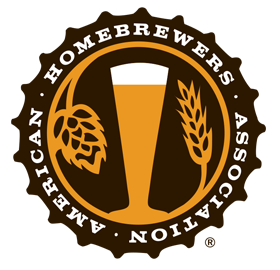
The following beer recipe is featured in the January/February 2013 issue of Zymurgy magazine. Access this issue along with the archives with Zymurgy Online!
There are loads of things to think about when you're talking beer and food flavor dynamics, and Charlie Papazian is someone we certainly trust when it comes to identifying beer styles that cut and complement different foods. In his World of Worts column in Zymurgy a few years ago, he highlighted some important points about beer flavor that will inform your food pairing choices. Things to pay attention to when you're building your menu, just to name a few, are acidity, carbonation, the level of roasted character, and bitterness.
Charlie presented this recipe for his Vitoria Vienna Pils, describing it as a beer that reflects the flavors, aromas, and nuanced complexity of even the simplest of recipes. This unfiltered, naturally conditioned German-style Pilsner is a hop flavor- and hop aroma-enhanced lager with subtle toast malt character that will elevate any food accompaniment.
This recipe was originally featured in the January/February 2013 issue of Zymurgy magazine. Join the American Homebrewers Association to access all Zymurgy issues through 2000!
The following beer recipe is featured in the January/February 2013 issue of Zymurgy magazine. Access this issue along with the archives with Zymurgy Online!
There are loads of things to think about when you're talking beer and food flavor dynamics, and Charlie Papazian is someone we certainly trust when it comes to identifying beer styles that cut and complement different foods. In his World of Worts column in Zymurgy a few years ago, he highlighted some important points about beer flavor that will inform your food pairing choices. Things to pay attention to when you're building your menu, just to name a few, are acidity, carbonation, the level of roasted character, and bitterness.
Charlie presented this recipe for his Vitoria Vienna Pils, describing it as a beer that reflects the flavors, aromas, and nuanced complexity of even the simplest of recipes. This unfiltered, naturally conditioned German-style Pilsner is a hop flavor- and hop aroma-enhanced lager with subtle toast malt character that will elevate any food accompaniment.
This recipe was originally featured in the January/February 2013 issue of Zymurgy magazine. Join the American Homebrewers Association to access all Zymurgy issues through 2000!
Ingredients:
- 9.5 lb. (4.3 kg) Briess Vienna GoldPils malt
- 2 oz. (56 g) German Hallertauer hops, 4.4% a.a. (60 min.)
- 1 oz. (28 g) German Saphir hop pellets, 4.5% a.a. (20 min.)
- 1 oz. (28 g) German Saphir hop pellets, 4.5% a.a. (dry hop)
- 0.25 tsp. (1 g) powdered Irish moss
- German or Bavarian lager yeast. (Charlie uses White Labs Cry Havoc)
- 0.75 cup (175 mL) corn sugar (priming bottles) or 0.33 cup (80 mL) corn sugar for kegging
Specifications:
Yield: 5.5 gallons (21 L)
Original Gravity: 1.048
Final Gravity: 1.012
ABV: 4.50%
IBU: 41
SRM: 5
Boil Time: 60 minutes
Directions:
A step infusion mash is employed to mash the grains. Add 9.5 quarts (9 L) of 140°F (60°C) water to the crushed grain, stir, stabilize, and hold the temperature at 132°F (56°C) for 30 minutes. Add 4.75 quarts (4.5 L) of boiling water, add heat to bring temperature up to 155°F (68°C), and hold for about 30 minutes. Raise temperature to 167°F (75°C), lauter, and sparge with 3.5 gallons (13.5 L) of 170°F (77°C) water. Collect about 5.5 gallons (21 L) of runoff. Add 60-minute hops and bring to a full and vigorous boil. The total boil time will be 60 minutes. When 20 minutes remain, add the 20-minute hops. When 10 minutes remain, add the Irish moss. After a total wort boil of 60 minutes, turn off the heat and place the pot (with cover on) in a running cold-water bath for 30 minutes. Continue to chill in the immersion or use other methods to chill your wort. Transfer the wort into a sanitized fermenter. Bring the total volume to 5.5 gallons (21 L) with additional cold water if necessary. Aerate wort very well. Pitch the yeast when temperature of wort is about 70°F (21°C). Once visible signs of fermentation are evident, ferment at temperatures of about 55°F (12.5°C) for about one week or until fermentation shows signs of calm and stopping. Rack from primary to secondary and add the hop pellets for dry hopping. If you have the capability, “lager” the beer at temperatures of 35–45°F (2–7°C) for 3–6 weeks. Prime with sugar and bottle or keg when complete.





Share Post